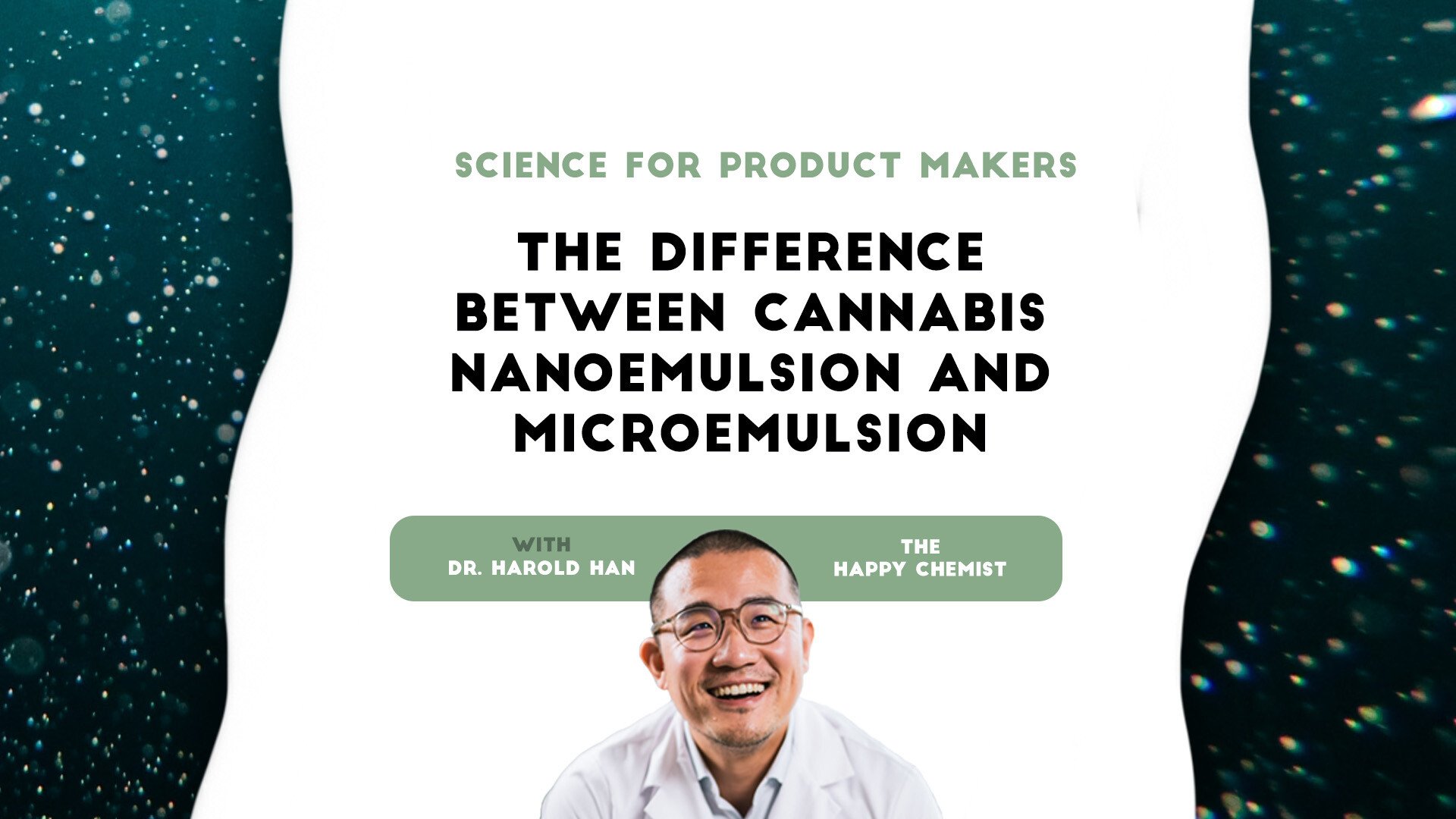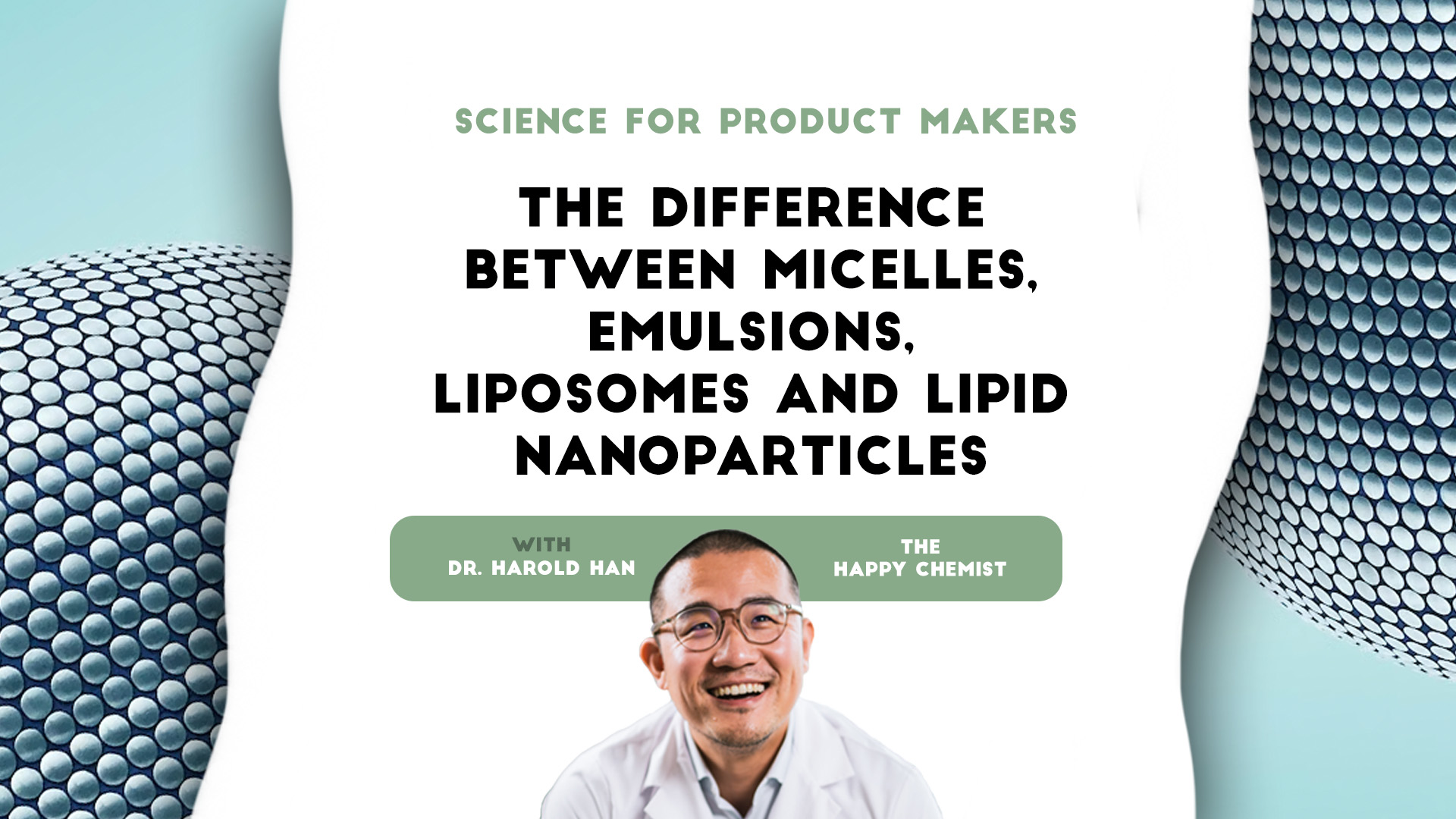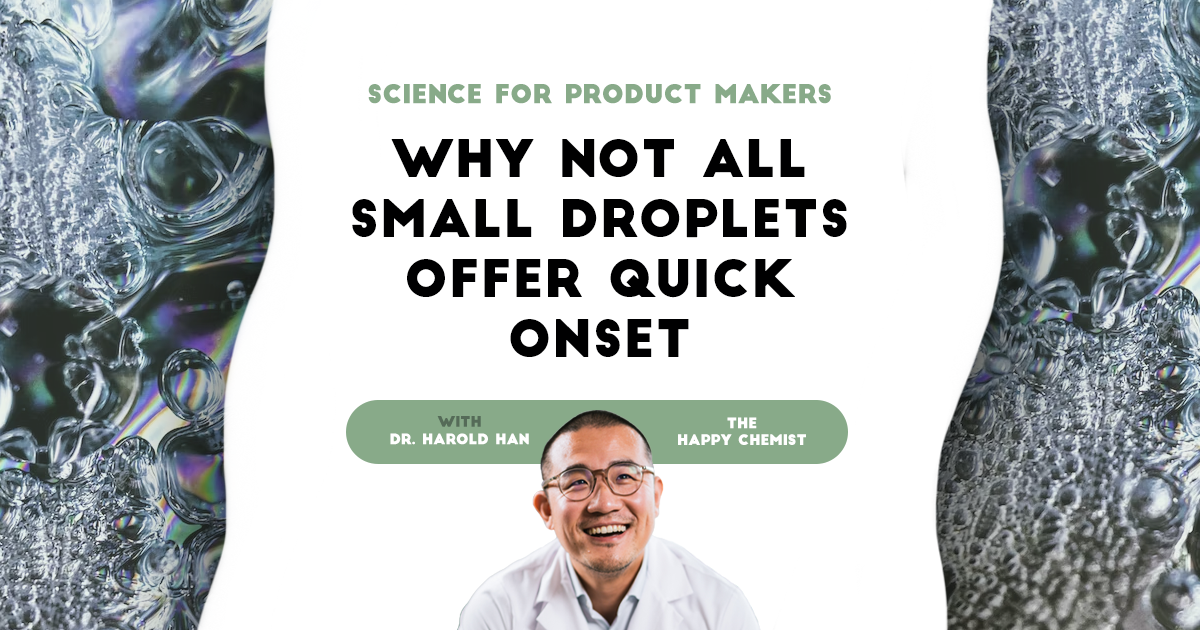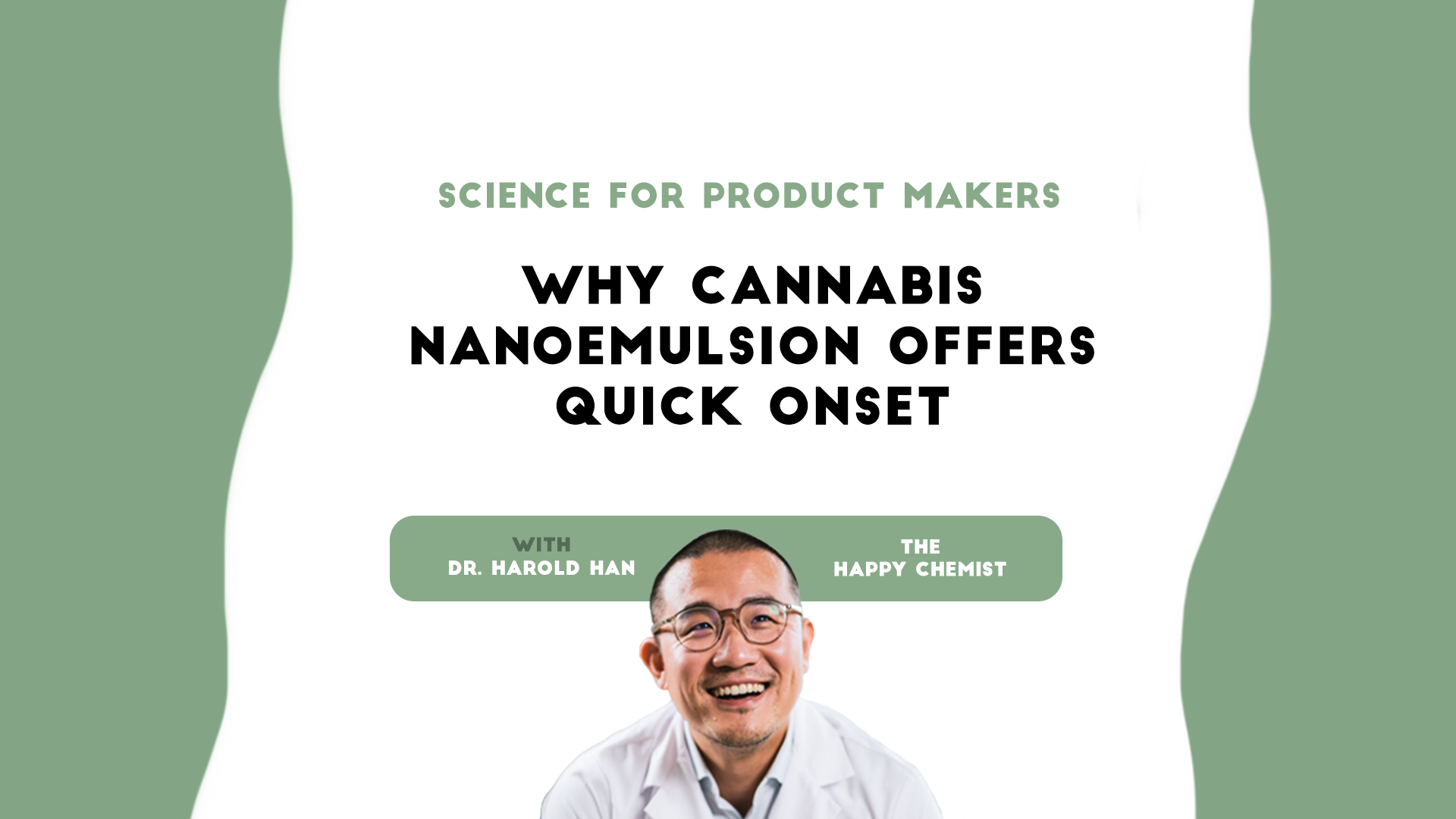Science for product makers: the difference between micelles, emulsions, liposomes, and lipid nanoparticles
This post is also published as an article on Harold's LinkedIn profile. You can read and leave comments here.
3 min read
 Dr. Harold Han - "The Happy Chemist"
:
6/28/24 5:10 PM
Dr. Harold Han - "The Happy Chemist"
:
6/28/24 5:10 PM

This post is also published as an article on Harold's LinkedIn profile. You can read and leave comments here.
With the growth of cannabis emulsion usage within the cannabis beverage industry, similar scientific terminologies can get misunderstood and misused by operators, the media and/or consumers. It is our duty to educate the industry since consistent and correct use of terminology is an important aspect of earning consumer trust. Today, I would like to clearly discern the two most misused terms, nanoemulsion and microemulsion. I will be referencing a paper by Professor David Julian McClements to support the content (source).

Last week, I posted a poll asking my LinkedIn audience about the difference between the two. According to the results, 75% of people believe the main difference between nanoemulsion and microemulsion is their droplet size. Many people believe “Nanoemulsions” contain smaller droplets than “Microemulsions”. This is because, literally, the term “nano” means a billionth whereas the term “micro” means only a millionth. It’s therefore reasonable to assume that a nanoemulsion contains smaller droplets than a microemulsion.
However, the main difference between nanoemulsion and microemulsion is not their droplet size, but their free energy level. Let me explain.
A microemulsion can be produced by adding a microemulsion-enabled emulsifier to oil and water. When you add mild agitation and low heat, the three components will spontaneously “self-assemble” into stable droplets, creating the microemulsion.
In nature, a drop of water usually self-regulates into a sphere. This is because a sphere offers the lowest energy to a water droplet. It is nature's tendency to move toward a lower energy status for more stability. Anything that can “self-assemble” will land in a lower energy state.
In contrast, once a nanoemulsion-compatible emulsifier is added to oil and water, it needs the input of much higher external energy — likely from high speed mixing, sonication, or high-pressure homogenization — before stable droplets are created.

If microemulsion is easy to produce and thermodynamically stable, then why do most cannabis beverage brands use nanoemulsion as the infusion technology?
Ingredient options for microemulsion are limited: Only certain emulsifier(s) can fulfill “self-assemble”, which usually requires synthetic parts such as Polyethylene Glycol (PEG). There are innovative companies who are working on using natural ingredients for microemulsion, but most applications on the market have challenges being “label friendly”.
Excessive amount of synthetic emulsifier needed for microemulsion: To reach self-assembly, an excessive amount of synthetic emulsifier is usually needed, sometimes even > 10 times the amount of active. That many emulsifiers usually create a challenge for flavor formulation.
To produce nanoemulsion, injection of external energy is required, usually using ultrasonication or high pressure homogenization. For either method, it can be challenging to produce nanoemulsion consistently at large scale, which is the biggest drawback associated with nanoemulsion.
However, the benefits of customization of nanoemulsion outweigh its production challenges, making it the main delivery method for aqueous products. Unlike microemulsion’s limited ingredient options, nanoemulsion has a wide range of option of ingredients in terms of emulsifiers and carrier oils. This ability to customize is essential for fulfilling industrial needs like labeling requirements and droplet size control for taste, appearance and experience.

Scientifically, microemulsion droplets are usually in the range of 10-100 nm and nanoemulsion droplets are usually in the range of 30-1000 nm. So it is not accurate to say one is definitely smaller than the other.
The table below summarizes the main differences between microemulsion and nanoemulsion. Again, it is not about their droplet sizes, but about their energy level, which is determined by the energy input during production.

Dr. Harold Han — the “Happy Chemist” — combines his storied background in emulsion chemistry and science with curiosity and fascination in the rapidly growing cannabis industry. Developing nano and micro emulsions his entire career, Harold holds a Ph.D in Surface Chemistry from NYU and is the inventor of multiple patents in emulsion chemistry.
As the Chief Science Officer at Vertosa, Harold spearheads the company’s development of industry-leading and customized active ingredients for infused product makers, offering pre-suspended aqueous solutions to create incredibly homogenous and stable products while maximizing bioavailability, clarity, and taste.
To learn more about the science of cannabis, check out Harold’s Happy Chemist videos.

This post is also published as an article on Harold's LinkedIn profile. You can read and leave comments here.

This post is also published as an article on Harold's LinkedIn profile. You can read and leave comments here. Inmy last post, we learned that a...

This post is also published as an article on Harold's LinkedIn profile. You can read and leave comments here. Our industry generally agrees that...